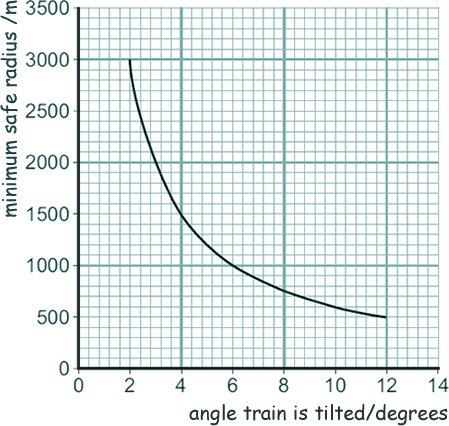GCSE Questions: Circular Motion Q2. The diagram below shows two train tracks, A and B.
(a)
[3 marks]
[2 marks] (b) One type of train is designed to tilt as it goes around bends. Tilting the train more increases the centripetal force that acts on the train.
[1 mark]
[1 mark] (c) An engineer built a small scale model to predict the minimum safe radius of curved track that the tilted train could safely go round at 250 km/hour. The results predicted using the small scale model are shown in the following graph.
(i) The engineer described the relationship between the angle that the train tilted and the minimum safe radius at 250 km/hour as inversely proportional. Use data from the graph to explain why the engineer is correct. [2 marks] (ii) The engineer also created a computer simulation of the tilting train. Suggest one benefit of using a computer simulation over using a small scale model. [1 mark] [10 Marks TOTAL] |
Follow me...
|







